 A new book – Funding the Co-operative City – brings together experiments across Europe that show new ways to finance and organise community spaces and services. One is ExRotaprint, a former industrial complex in Berlin that has become a co-operatively owned area, and which paved the way for a shift in the city’s privatisation policy
A new book – Funding the Co-operative City – brings together experiments across Europe that show new ways to finance and organise community spaces and services. One is ExRotaprint, a former industrial complex in Berlin that has become a co-operatively owned area, and which paved the way for a shift in the city’s privatisation policy
- The following article is an edited version of one of the essays in Funding the Cooperative City, called ExRotaprint: community ownership against speculation, written by Daniela Brahm and Les Schliesser
ExRotaprint was founded in 2007 by tenants of the Rotaprint industrial complex in Wedding, a traditional working class district in northwest Berlin. When the complex was put up for sale by the Berlin Municipality’s Real Estate Fund, members of the ExRotaprint began to look into the possibility of buying the area. Teaming up with two anti-speculation foundations, the non-profit company established by the tenants became owner of the 10,000 m2 complex, setting a precedent in Berlin that inspired many experiments in cooperative ownership, and a campaign to change the city’s privatisation policy.
How would you describe the area where ExRotaprint is based?
The Rotaprint Company used to be well known
for their offset printing machines. The Rotaprint manufacturing site was located in Berlin-Wedding for more than 80 years, and the company shaped the area. Apart from the premises they had a guesthouse in the next street and a workers’ holiday home. We felt that the spirit of Rotaprint was still here, which is why we named the compound ExRotaprint. It is also to honour the architectural achievement, because we think they left fantastic buildings.
How did you get involved in rethinking the complex?
From 2000 on, we were tenants in one of the former Rotaprint buildings, at the time owned by the City of Berlin, when they put it up for sale. In 2002 the City of Berlin decided to change its real estate policy and put all the properties it owned but did not need for its own uses up for sale: this was a policy to fill the empty pockets of an indebted municipality. Looking back, this policy obviously changed Berlin a lot. The only criterion for selling buildings was the highest bid, the
highest amount of money, and no criteria of urban development or social and cultural concepts were taken into account. We were confronted with this new policy right at its introduction, and we knew that we had to do something instead of waiting for the investor who would finally buy the buildings and push us out. At the time investors were all
over the place in Berlin, but the Wedding district, a former working class district, was not yet attractive for them. This gave us a timeframe to develop our concept without much competition.
‘It was important for us to show that a new
and different way of dealing with property is possible’
How did you organise the tenants?
At the very beginning, we took photographs of the workshops and everything that was already on
the compound. We also did interviews with the people about how much they had already invested in their space, what they were doing, if they had employees etc. In the end, we had a little folder presenting the idea of keeping the local structure, taking it as a starting point and promoting and expanding it. Then, we started the ExRotaprint project with the people who were already renters on site, a very heterogeneous group. Only half of the compound was rented out. The first step was to involve others on the compound in the idea. At the time, people did not know each other despite working within one complex; it was a very anonymous space. We decided to found the association of tenants at the former Rotaprint premises: the association was called ExRotaprint. This was in 2005, and it was our first platform. Step by step, we educated ourselves and became project developers. At the same time we took up negotiations with the city about the purchase price.
How did these negotiations go?
After we founded the association we arranged
an appointment with the officials from the city-owned company that was in charge of selling publicly owned land. They had the task to fill the city’s empty pockets by selling off properties. Today this policy is considered to be a mistake because there is a new need for housing but the city will never get back the land sold. Our community-based project development concept was of no interest to them. Unfortunately, our negotiations did not go anywhere. In the meanwhile, they worked behind our back to involve an Icelandic investor who was willing to buy 45 properties at once, and the Rotaprint site became part of that package. This was just the opposite of our idea of local development for the area, and it took us one and a half years to fight against the investor. In the end, he did not buy anything and they called us again and said: ‘Now make another bid, please.’ Luckily, we knew that as a part of the package, the Icelandic investor would have paid only 600,000 euros. We simply offered 600,000 euros as well, which was nothing for the premises, but under the political pressure we organised they accepted it.
How did the tenants conceive the possibility of buying the property?
We had substantial discussions among the tenants and in the association. People are very different, and had different ideas about how to deal with the property. Someone said, ‘I have some friends who can give us the money.’ This was a big warning for us because whoever brings the money in, decides in the end. Most artists said, ‘This is very interesting but I have no money at all.’ Others thought that we should set up a cooperative. A social worker who worked with unemployed people said, ‘We cannot sign anything in conflict with politics because our projects are funded by politics.’ Everybody had a different perspective and different individual interests. The most difficult thing was money: none of us really had any. We were facing a 10,000 m2 complex and we needed an overall solution. We could only buy everything together; it was not possible to buy just this or that workshop. We also knew that some of the buildings only needed a little bit of maintenance while others need a significant amount of money to be invested. We knew that it would not work out if people only think about their own units. To buy the premises was one hurdle, but renovation costs would be even higher. There was a kind of pragmatism rising among the group. People were concerned that it would take 25 or 30 years to pay the investment back and by that time they would be old and their businesses might not exist anymore.
How did tenants relate to the idea of becoming owners themselves?
As soon as the idea of buying the Rotaprint area emerged, the thought of owning the compound was immediately connected to the idea of profit. We realised that in the future, when the compound is renovated, its value would increase immensely. While we were able to buy it for 600,000 euros in 2007,
we could already predict that in 5 or 10 years,
the compound would be worth ten times more. Right at the beginning, even before the project really had started, the idea of personal profit, of individual investment return became a huge threat for the project. The danger was that the group falls apart because of individual interests. At that point we decided to think about a non-profit limited company in order to exclude the possibility of individual profit and speculation, and to ensure that we will never have the same problem again with the compound being sold.
We would have been able to buy the compound privately, nobody forced us to come up with a non-profit solution. It was important for us to show that a new and different way of dealing with property is possible, and to make sure that the people who made up the district could continue to use the space. Finally, ExRotaprint became reality as an open and inclusive project development that finances itself and does not rely on external funding.
Most of the members of the association became partners in the non-profit company ExRotaprint. We had to collect some money among the partners to set up the company, for legal costs and to bridge the time until we could rely on the rental income. Some members questioned the idea of a non-profit company as they were business people, such as this old-fashioned electrician who had always lived and worked in the district. We thought that people like him have to stay here and remain part of the project, although he does not play an active part. Some people stepped out, while others showed interest in the project and joined. In the end, we all remained renters on the compound, regardless of being a partner in the company and active in the project or not.
How did you raise the money?
Our negotiations with the company selling the property were concluded when we brought in the two foundations. Both foundations have similar agendas to prevent speculation with land, and to install alternative models that take land completely off the market
in a way that it could never be sold again. This
was a very convincing concept to us. Today ExRotaprint pays 10% of the net rental income to the foundations, making it a 6% investment return on the purchase price. It is a business relationship, not sponsoring. In the long run, ExRotaprint contributes to the financial means of the foundations.
How does the company function today?
The company has ten partners. We are all renters and we also have the association of all renters, the RotaClub e.V. (which was formerly the ExRotaprint e.V. as the first platform) as the eleventh partner. The partners and the board of the association meet once a month. The planning team consists of four people and meets once a week (the two architects Oliver Clemens and Bernhard Hummel and us). Work is paid, although it is not a well-paid job. Our financial construction relies completely on the income from rents. The official status of a non-profit company goes along with the obligation to invest our gains in declared non-profit goals. ExRotaprint gGmbH has the goals of supporting monument conservation and arts and culture. This enables us to maintain the listed heritage buildings on the compound,
and prevents the project from divesting the capital outflow into private pockets.
Who are your tenants?
We rent spaces for various uses; we wanted to have a heterogeneous group of renters here, and not only the creative class, which is what usually happens in Berlin and other places. We have this fantastic architecture, a very inspiring place, but we think it should not be for the sole use of artists and creatives alone. From the very outset, we had the idea for the ExRotaprint project to do something that makes sense to people that live in the neighbourhood. In the beginning, we decided that we were going to have community outreach projects and normal workers at ExRotaprint. Workspaces and production units that give regular jobs to people. The whole compound is a mixture: one third of the available space is for arts and culture, one third is for social projects, and one third is for production and regular work. We have local businesses working, we have art studios and graphic designers, and many community outreach organisations, such as German classes and services for the unemployed, that are of great need here in the Wedding district. About 200 people come to ExRotaprint every day to learn German. We also have a school that works with dropout teenagers who left school or who already have a criminal record, a typical phenomenon in the area. This school is their last chance to return to a social consensus, and next door or on the street they see their buddies who do not have this choice. If you have space, you should do something directly for the people who constitute the area.
What is the long term goal of ExRotaprint?
The obvious objective is to consolidate the buildings for the next at least 30 years. ExRotaprint will stay an open space for the people in Wedding and their needs and occupations. With what they do and produce at ExRotaprint, they generate the important social, economic and cultural capital.
The city of Berlin has changed a lot in the past decade. The free and easy accessibility of space with low rent in Berlin came to an end, the city is ‘normalising’; it is becoming a regular capital with fast raising land prices. Today ExRotaprint functions as an example for successful community development. That makes it easier to start similar non-profit – and hopefully diverse – projects in the city. We interfere on different levels politically to spread our ideas of an open city with chances for all inhabitants.
- Read the full article and the rest of the essays in Funding the Cooperative City










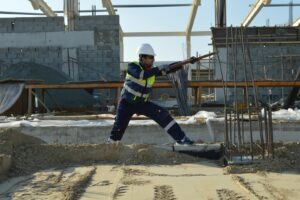
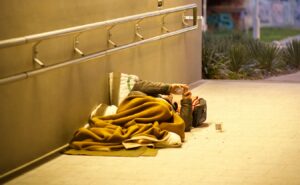
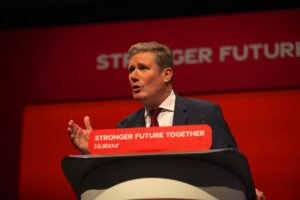

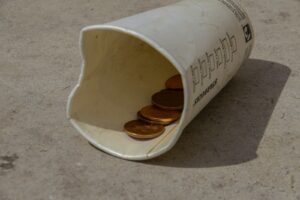
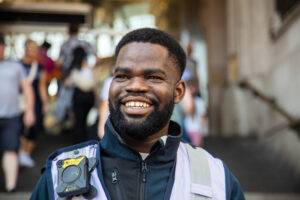

Leave a Reply